Renting a car at the Lisbon airport takes so long that I wouldn’t recommend it to anyone getting off a transatlantic flight. Catch an Uber into Lisbon or Sintra, spend a few nights, and then send one designated victim back to the Lisbon airport to wait in various lines for 1.5 hours (the Sixt folks said that our 1.5-hour wait occurred during a “calm” period and that it could and would get much much worse; a normally polite American grandma described her experience at Hertz on a different day as a “sh*tshow”). After the car is obtained, have the rest of the family or group Uber out to the airport (only about 15 minutes from downtown Lisbon) to meet the designated victim. Some folks waiting in the line to get paperwork and then the line for people who successfully obtained paperwork:
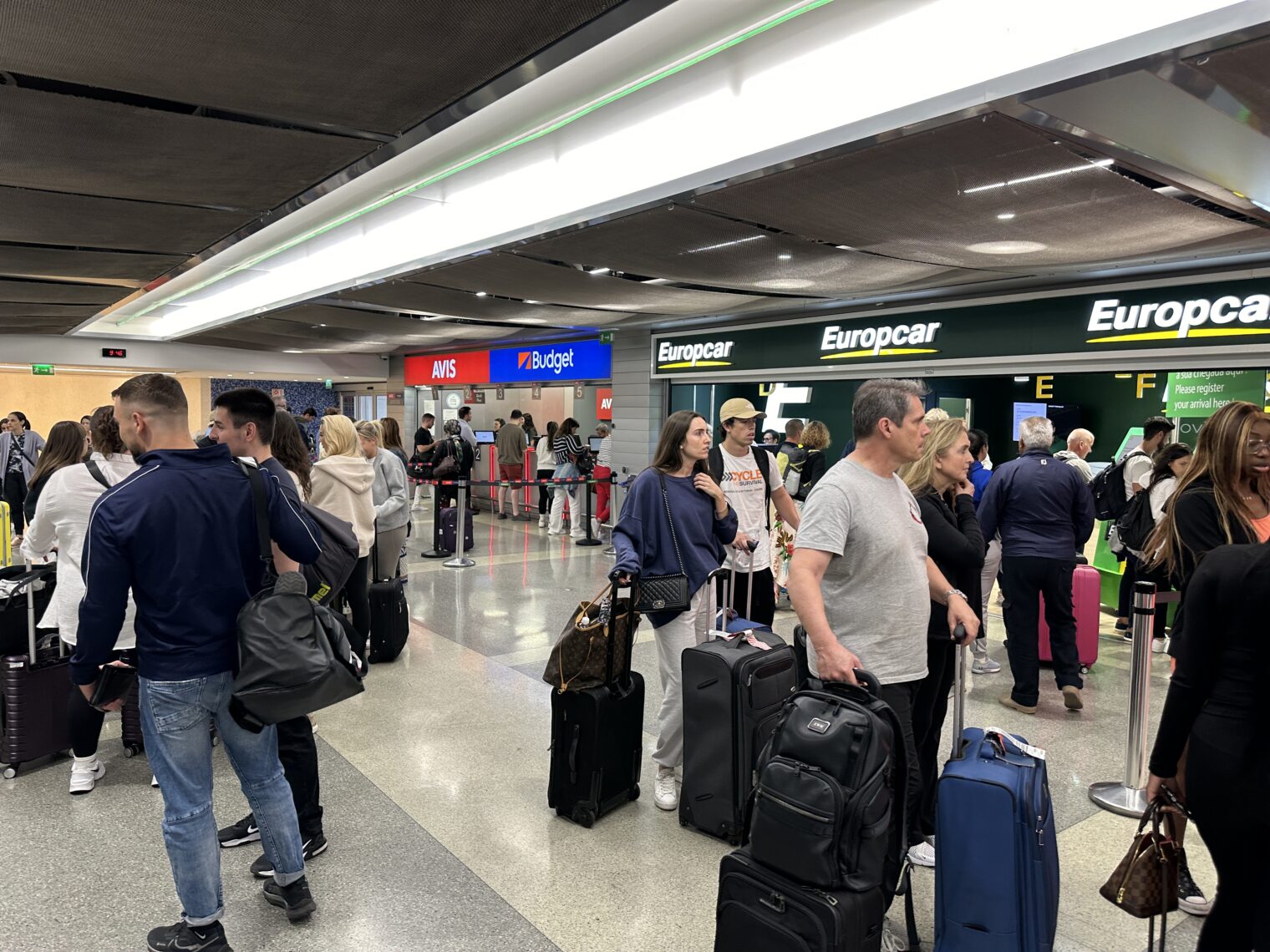
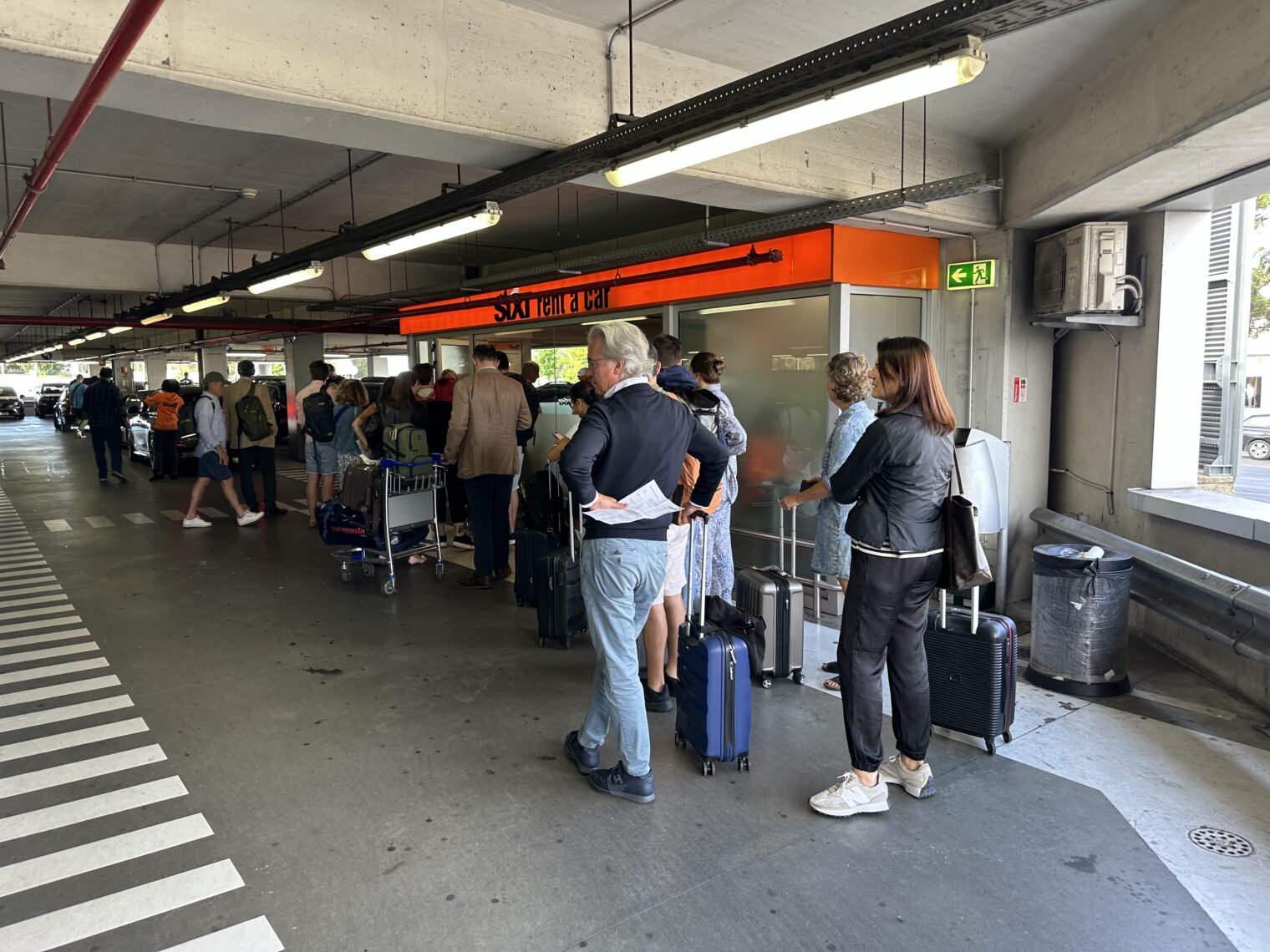
Try to avoid being given a plug-in hybrid. These are impossible to charge in Portugal unless you apply for an EDP account, which is impractical unless you have a Portuguese fiscal number (like our Social Security number), a European bank account with IBAN, a Portuguese phone number, and a few days to wait for various hurdles to be cleared. I never saw a charging station that accepted credit cards. Our plug-in hybrid Mercedes had almost no trunk space due to the big battery that we had no way to charge. It was dragged out from an obscure corner of the garage so covered with dust and dirt that it wasn’t safe to drive (the employees cleaned the windows for us before we left). To add insult to injury, the car failed within 48 hours and then Sixt charged us 61 euros for the tow truck that had to come out (we didn’t buy “roadside assistance” for their defective cars). A little more abuse after we got back to the U.S… Sixt charge us 395 euros for a purported scratch to a wheel (or maybe just a plastic wheel cover; we never figured that out), which included fees for “loss of use” (they already said that the car needed to go to a dealer for battery/computer repairs) and “damage handling fee”. I don’t remember ever scraping a curb (Portuguese curbs are, in general, low and rounded) so I think the root cause of this debacle might be that the car was delivered so dirty it wasn’t possible to see a minor pre-existing scratch.
The car-based portion of our trip began at the Mafra palace, which has its own basilica:


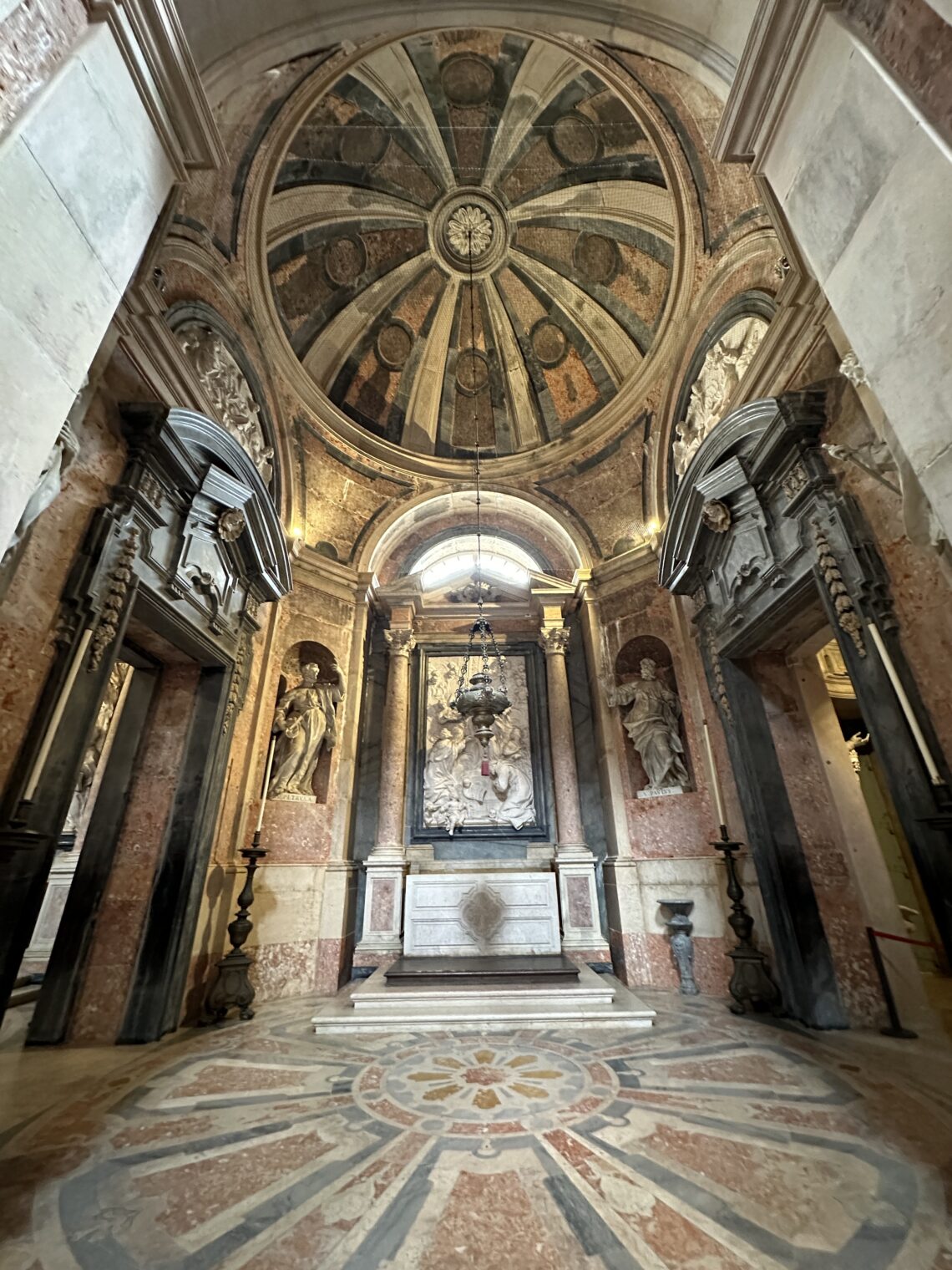
Being royal meant doing a lot of shooting:
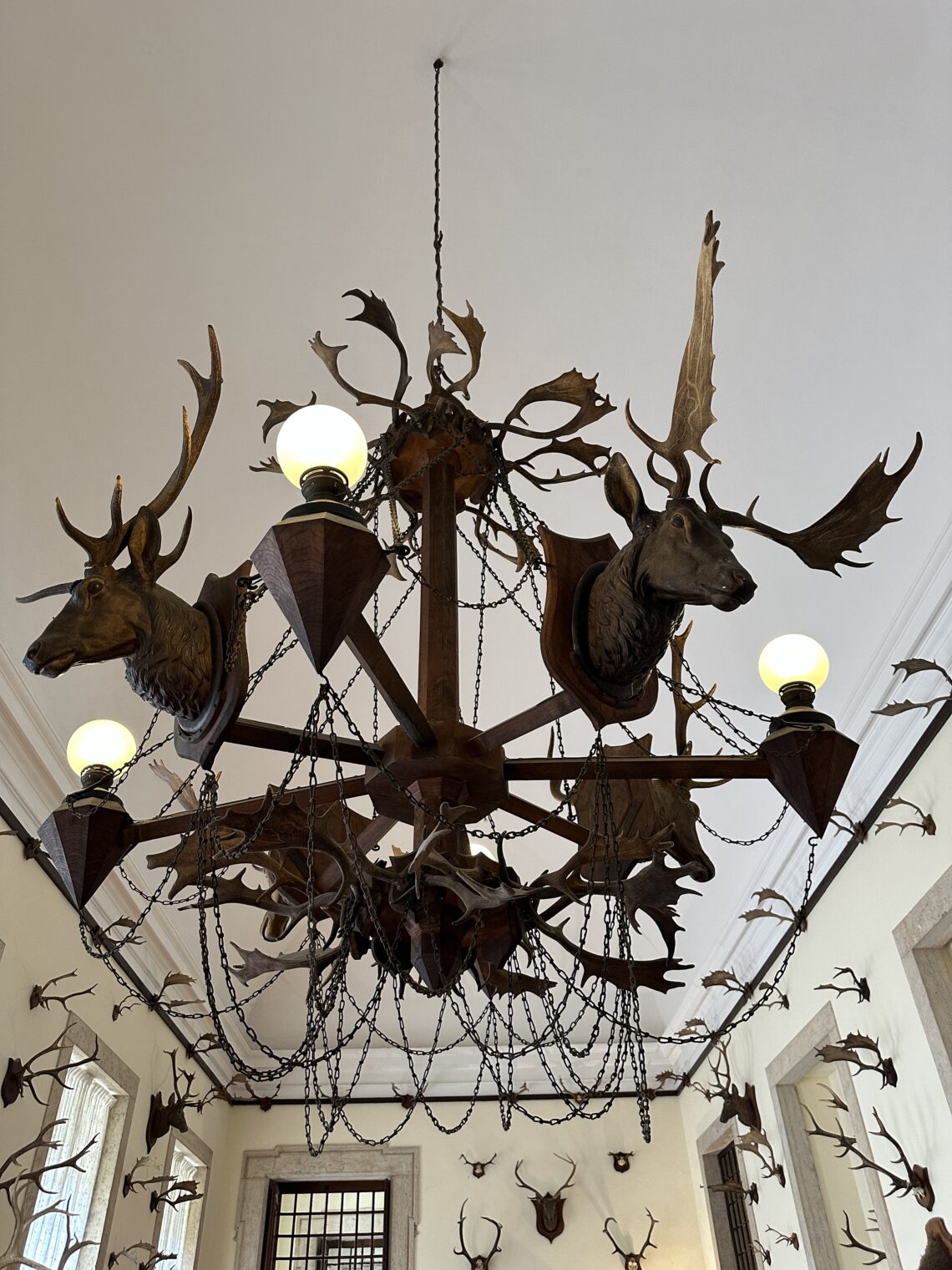
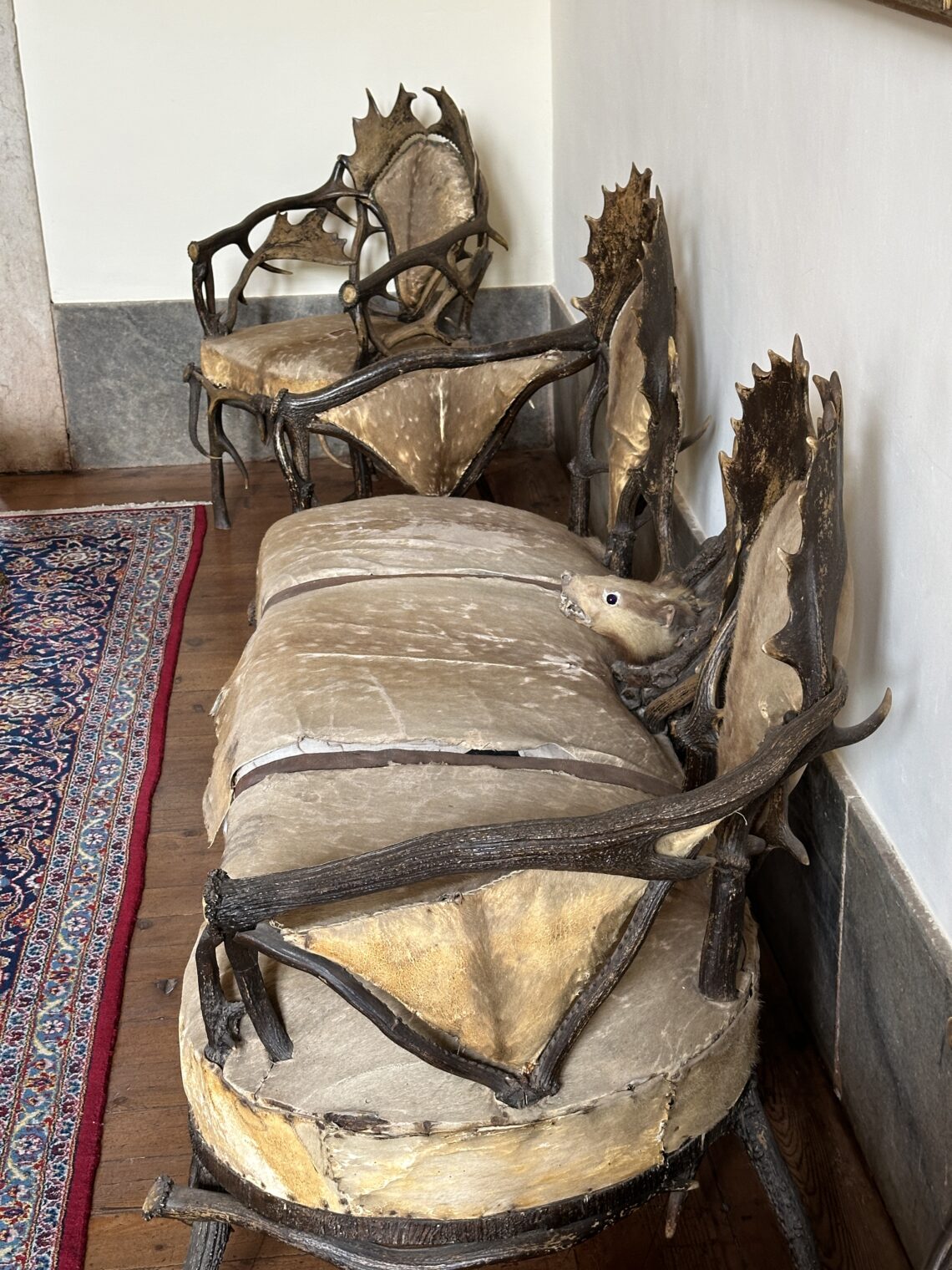

It was also possible to read:
They also had a pre-flippers pinball machine and what seems like a precursor to foosball:
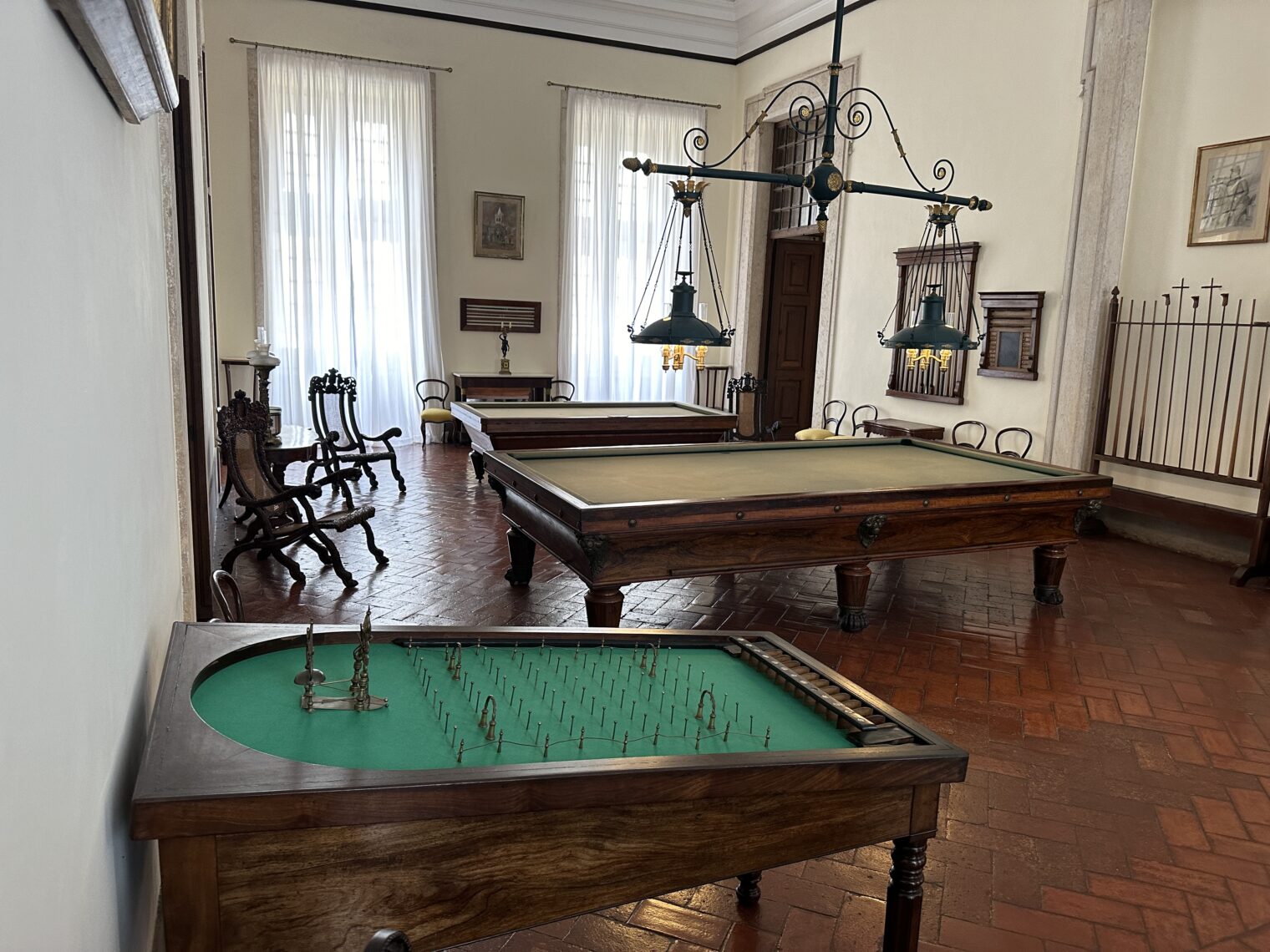
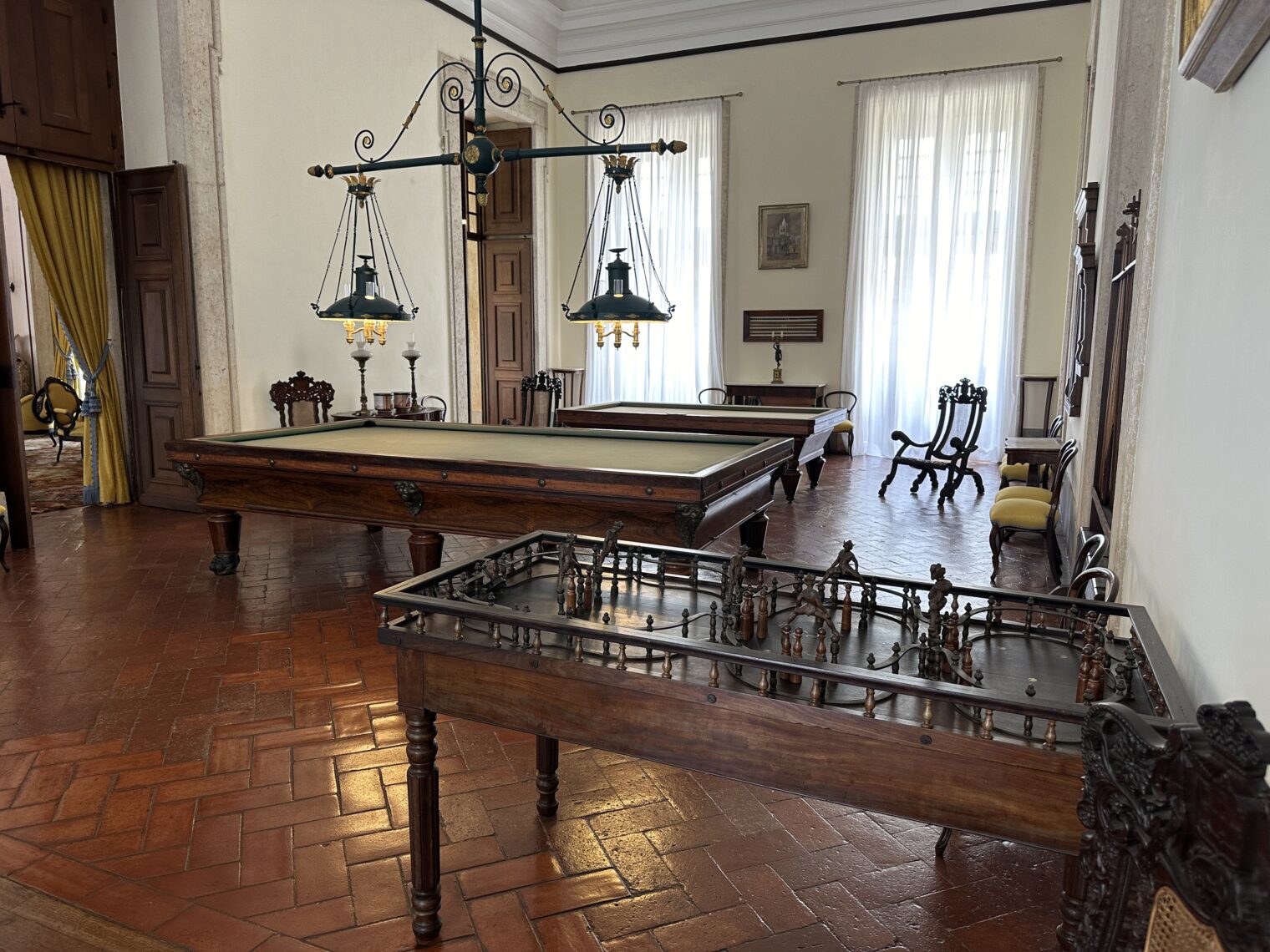
Here’s lunch at a restaurant a few steps from the palace:
Next stop was the Buddha Eden garden, previously described, and then Nazaré, Europe’s capital for big wave surfing in the winter. Here’s a view from Sitio de Nazaré, which overlooks the beach and has a nice church and square;
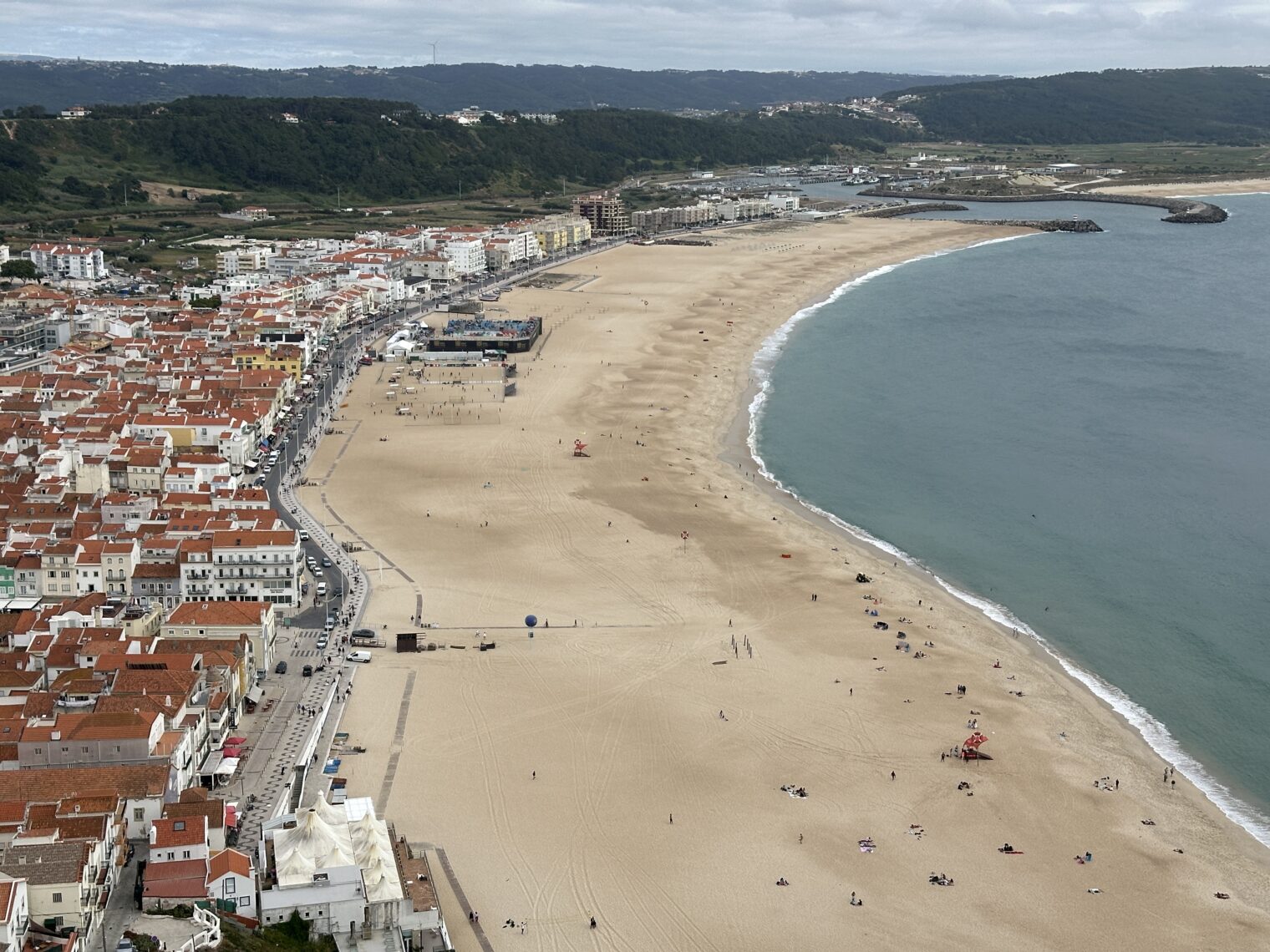
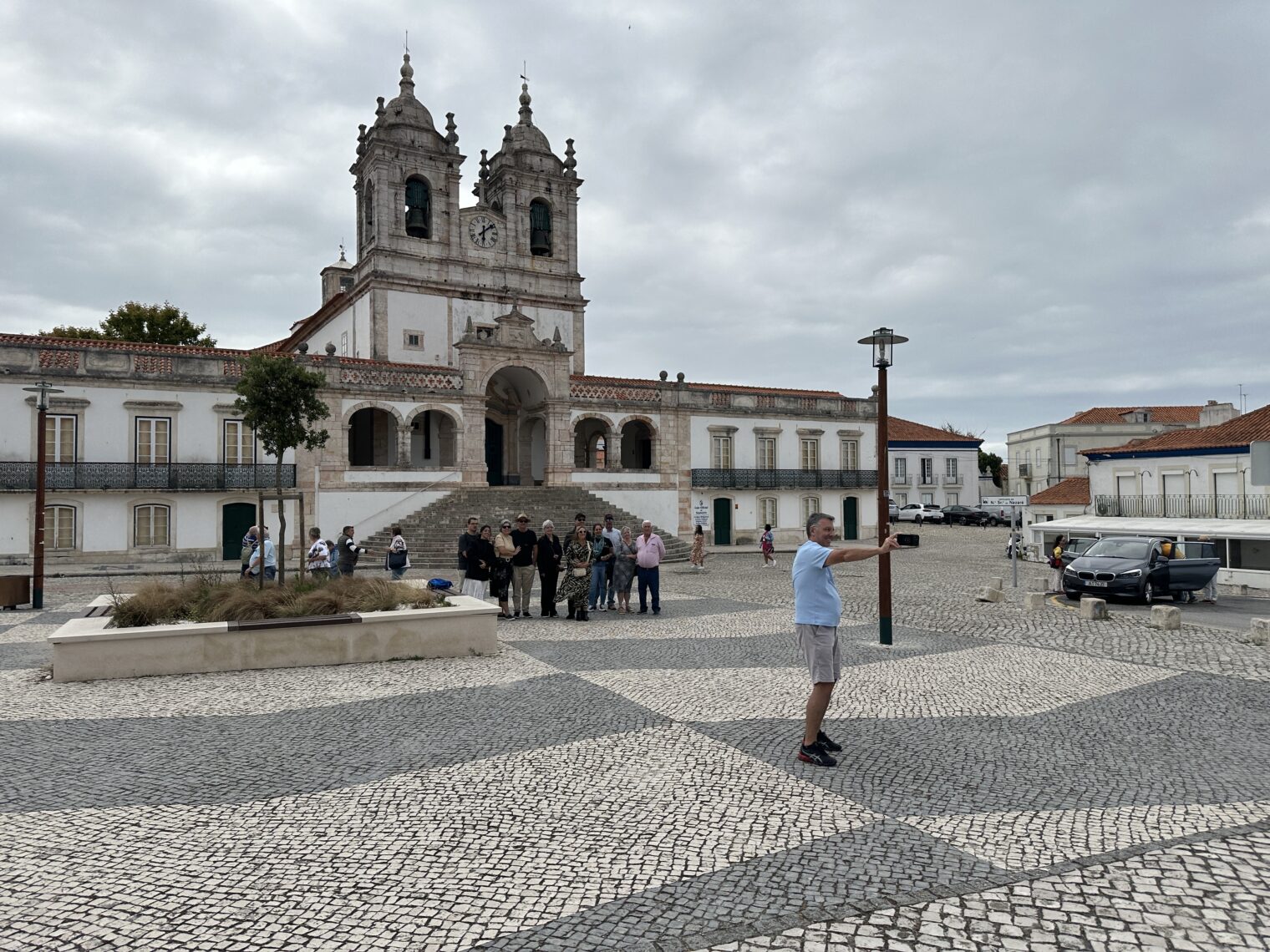
Then it was on to Batalha, home to a UNESCO World Heritage church and monastery. A Portuguese travel agent discouraged us from staying here, but it turned out to be a great base for two nights. We were surprised to learn that the monastery contains Portugal’s tomb of the unknown soldier (the country fought as England’s ally in World War I).





On the way to Grutas de Mira de Aire (limestone caves), we stopped to walk on a Roman road. Note the difference between 1x and 3x on the iPhone (at 1x you can see the Roman wind turbine and the Roman picnic tables):
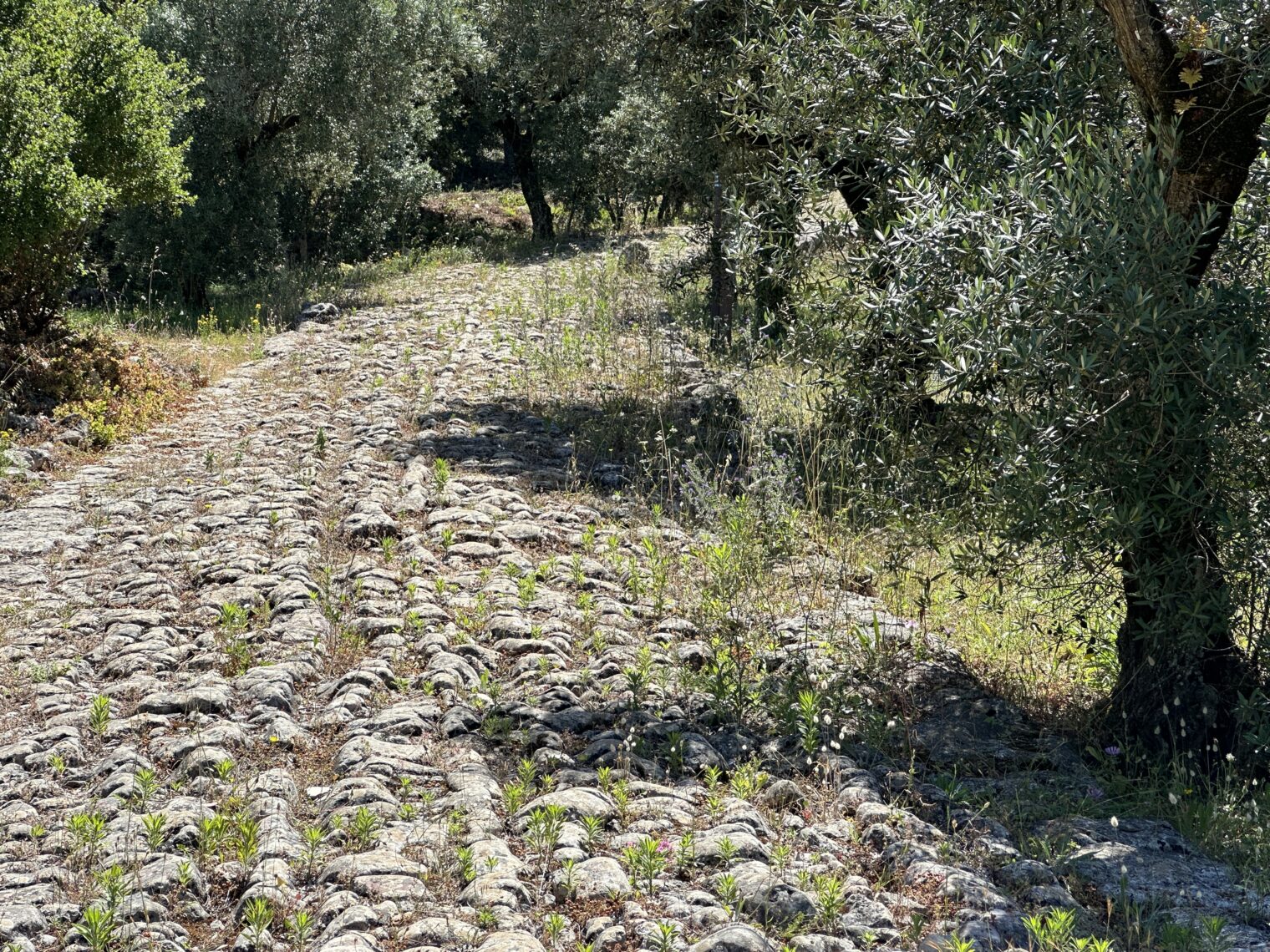
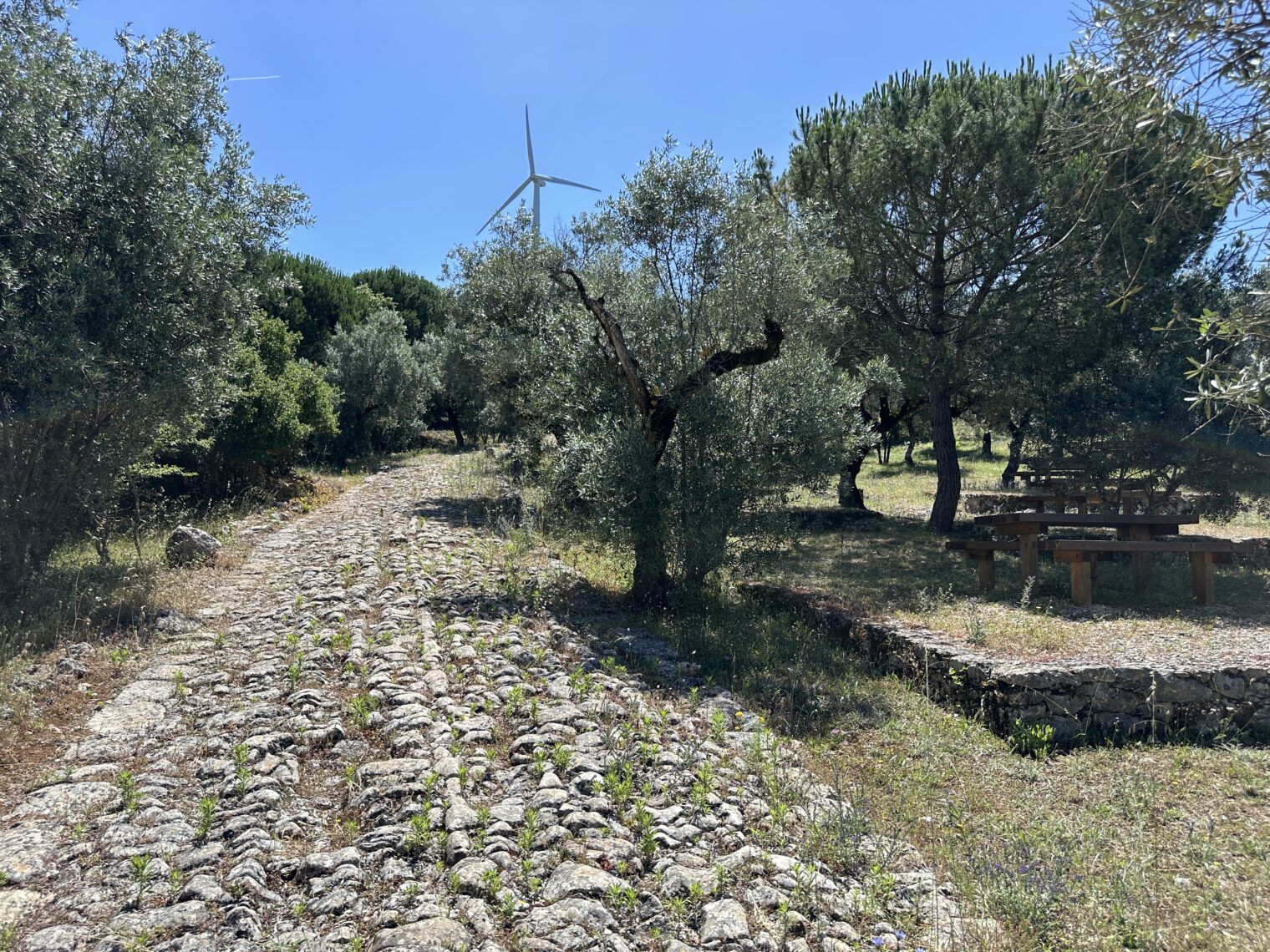
Fortunately, they’re not afraid to punch up the caves with a bit of color:
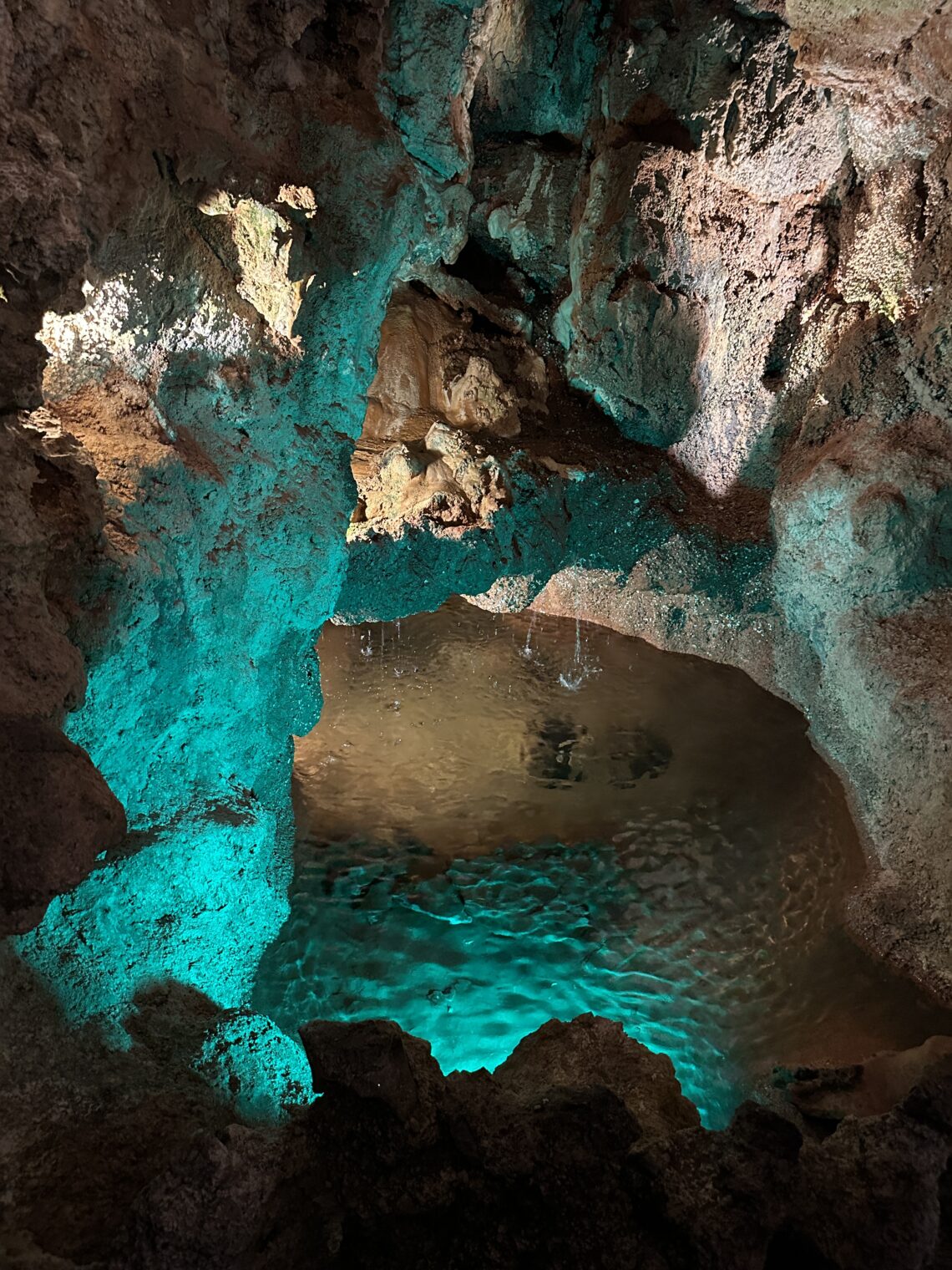
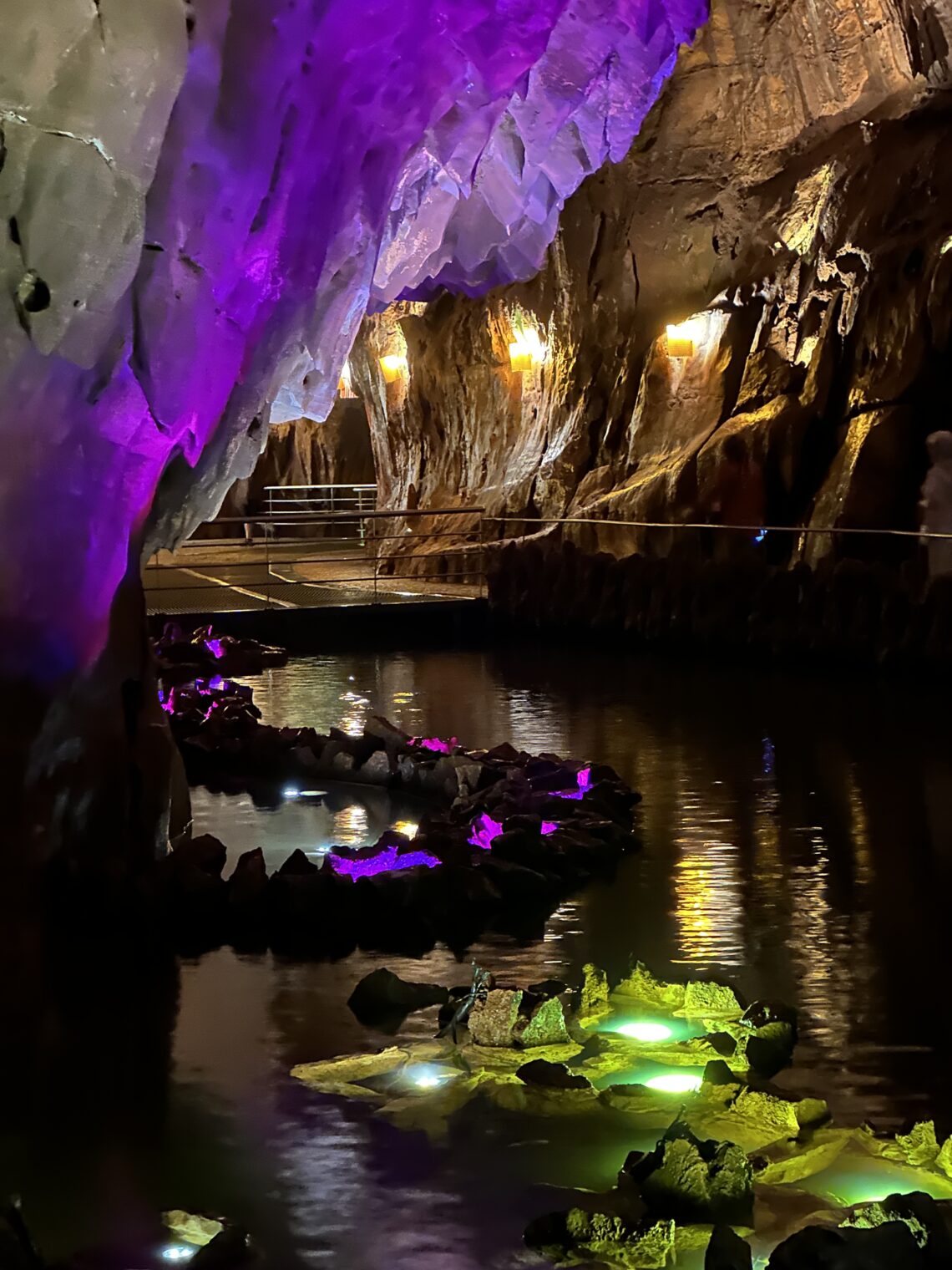
On the way back to Batalha, we stopped at Castelo de Porto de Mós:

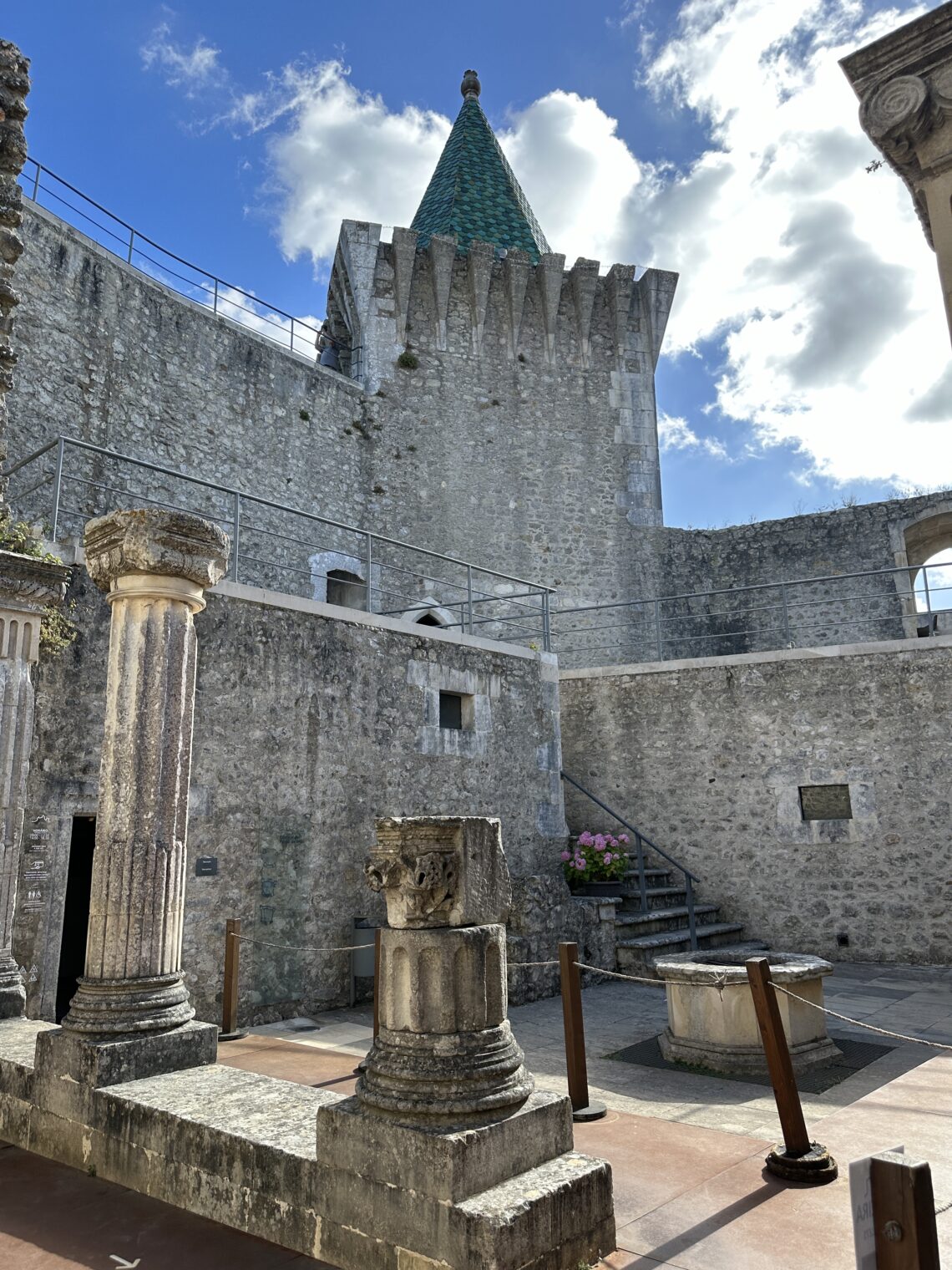
Then it was back to our AirBnB, which was a tiny but efficient 2BR ($105/night including cleaning):
One thing that we learned is that if you want fast reliable Internet, AirBnB is the best lodging option. The large Portuguese WiFi networks never seemed to be fast or reliable. Free WiFi at the Lisbon airport, for example, never worked at all (two visits a week apart). Hotel Internet was always slower than AirBnB WiFi and also subject to interruptions, dead zones, etc.
The next day, after some tow truck assistance to reset our Mercedes plug-in hybrid’s brain, we drove to Coimbra and Portugal dos Pequenitos, a theme park of miniatures covered in Celebrating Juneteenth here in Portugal. After that, we drove up the hill to the founded-in-1290 university to see the famous library (no photos allowed) and, coincidentally, a lot of graduation celebrations:
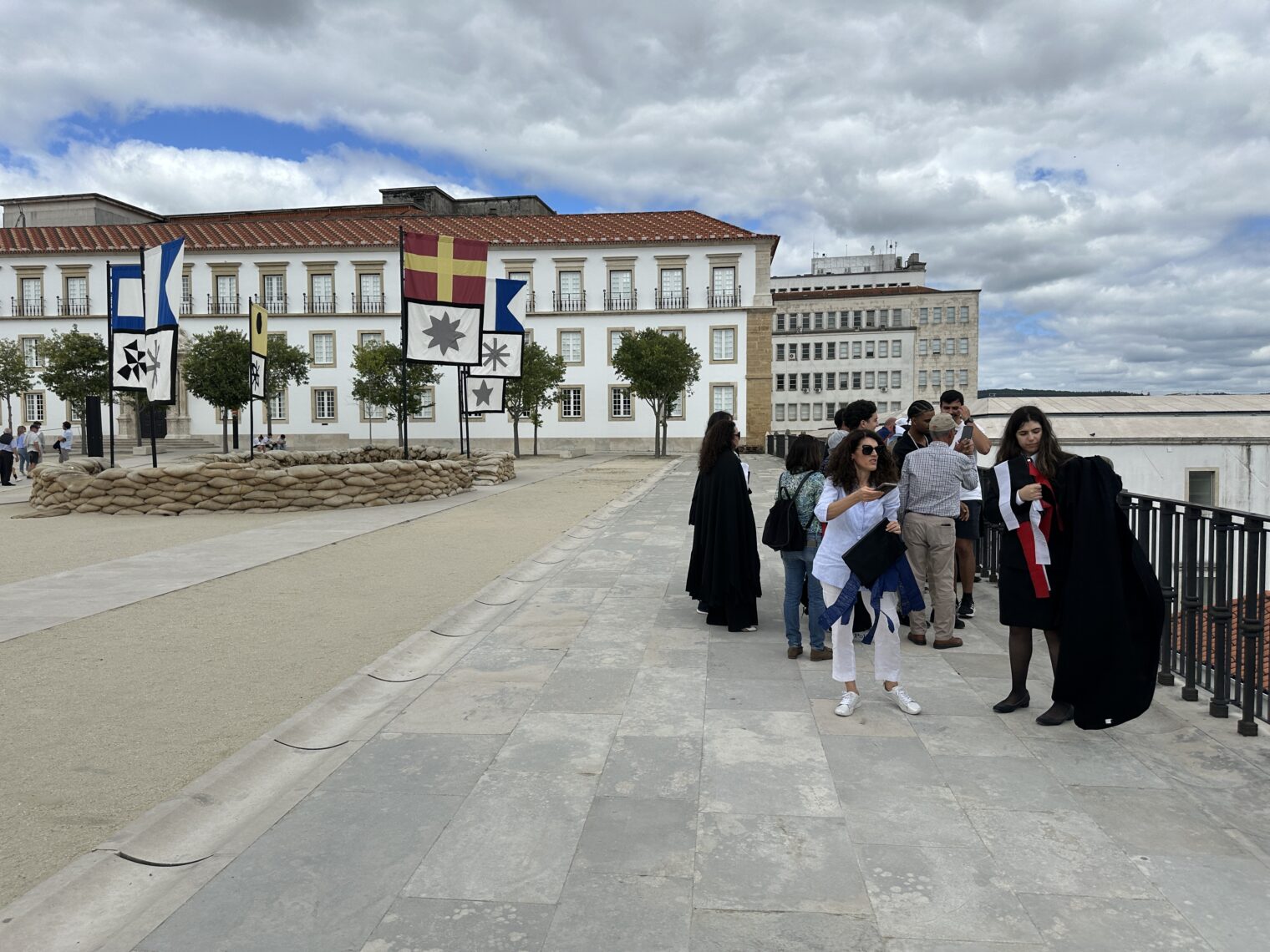
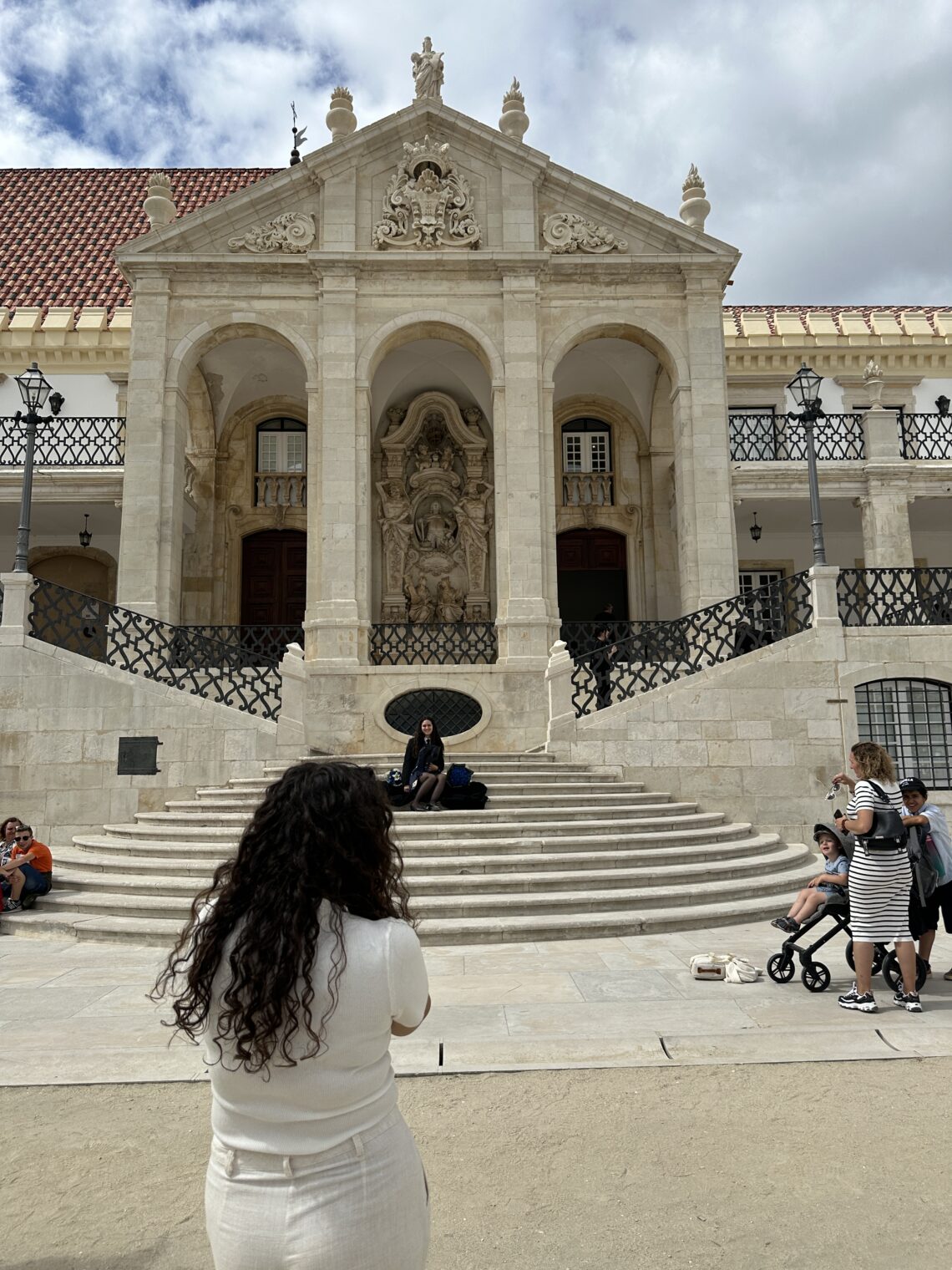
Coimbra is a nice town, but the hills make it tough to get around, at least from a Floridian’s perspective.


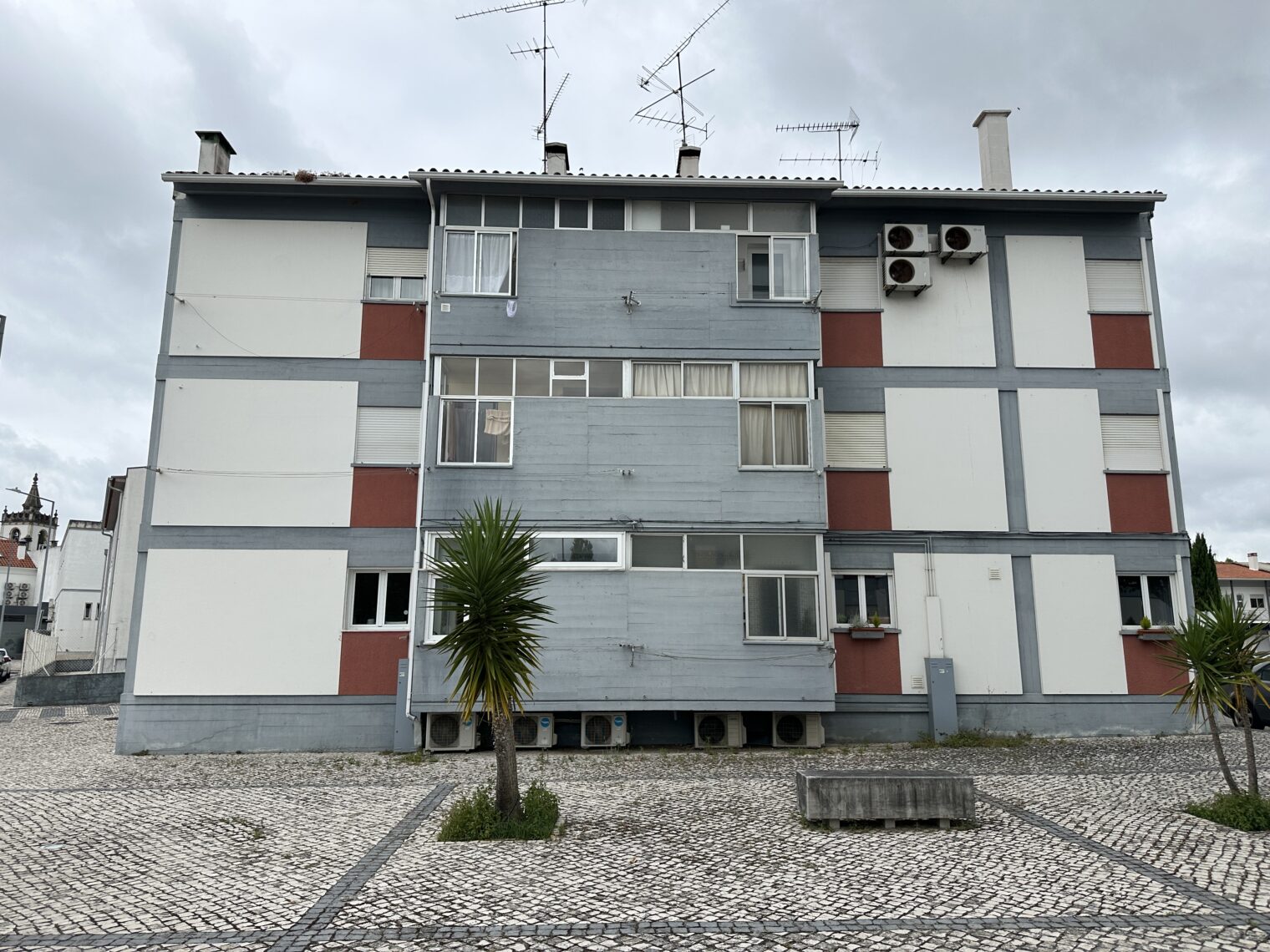
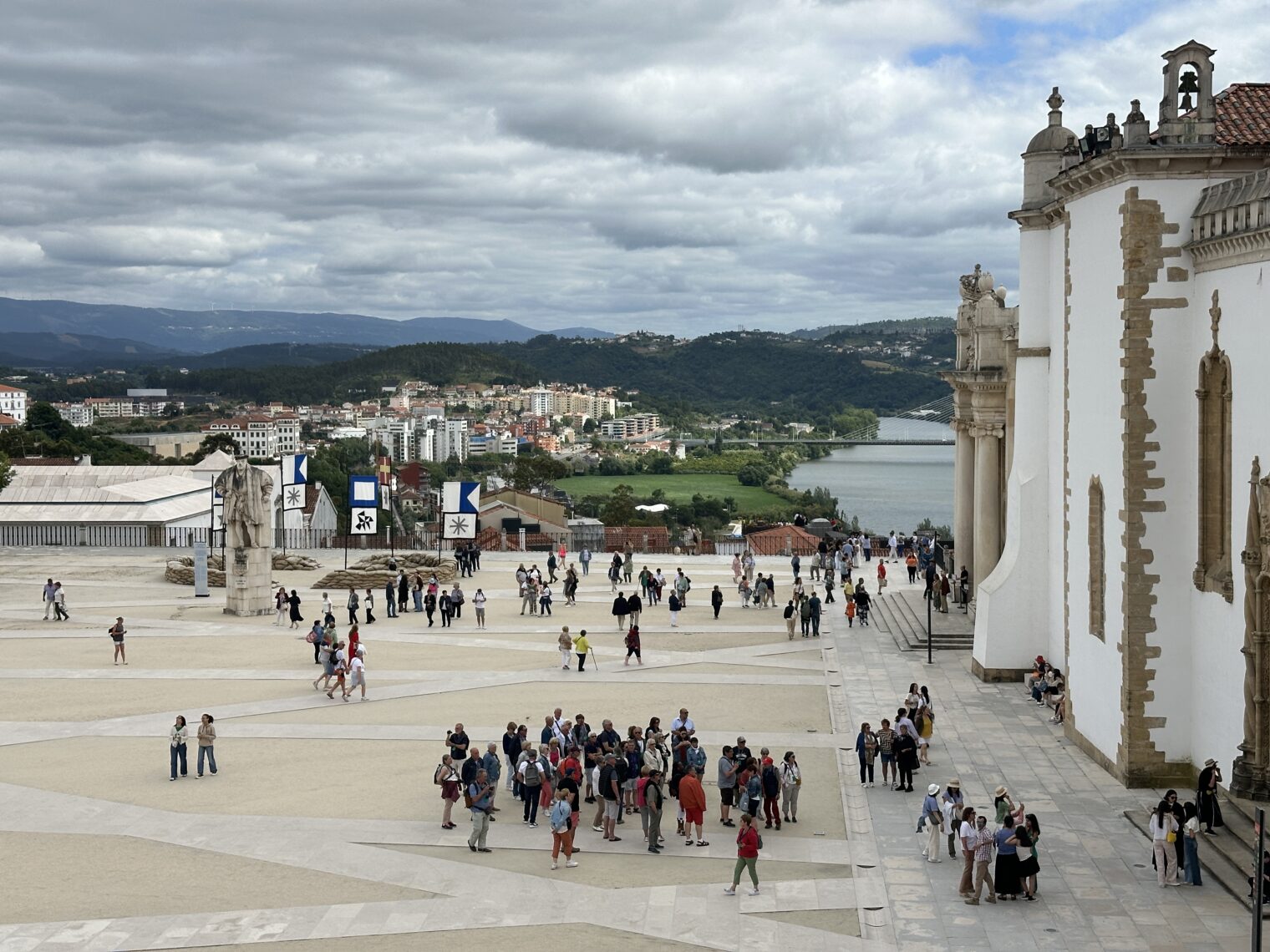
Could a person with shell-fish allergies survive in Portugal? In USA 2.3% have them, while in Europe it’s less than 0.1%. Completely unrelated: the recommended number of vax shots for children in USA is 54 (2019), while in Portugal it’s 22. Do the less vaxxed people of Portugal appear less healthy?
(all data sourced from Perplexity.AI).
Anon: There are plenty of meat-based dishes, especially in the north!
The less-vaxxed people of Portugal do seem healthier than Americans, but mostly due to being less obese.https://en.wikipedia.org/wiki/List_of_countries_by_obesity_rate says the US has an obesity rate of 43 percent while Portugal is down at 17 percent.
There are people with shellfish allergies in Portugal. It is a common dish, but relatively recent outside localised coastal communities. Portugal was a very poor country until the 1980s, and shellfish was out of reach of most of the population. They are not part of the traditional staple foods, which were heavy in potatoes, onions, meat, and white fish.
I am not sure if the number of vaccines is really that different in Portugal vs. the US. Nowadays many vaccines for kids are combined, so it could be that Portugal uses a different mix with more combinations. Chickenpox vaccine is recommended in the US but not in Portugal.
Indeed the national network for EV chargers is a mess for foreigners. It is really confusing to navigate the providers, but there are at least a couple (Miio and EVIO) that allow payment with credit card by using their app.
Wifi in airports is complete shite and usually never worth the frustration. In fact, my main recommendation to dealing with airports in Portugal is “breathe in and relax, don’t rush things, and just accept it will take a while.” Lisbon airport has got a lot better; it used to be routine to wait at least an hour for the luggage. I’ve never rented a car in the mainland, but the experience you mention is much worse in the Islands. Document everything, take photos before and after returning, and push back on such scams.
Home internet is quite fast in Portugal and cheap. Plans with 1 Gbit to the home are common, and some ISPs are now offering 10 Gbit. But maybe the best for visiting is to get a local SIM card (if you have an unlocked phone), and just use mobile data. Unlike the US, you are very unlikely to ever come to a region without 4G.